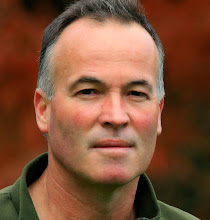1080 use threatened by organised opposition
Home » News » Farming
By Neal Wallace on Mon, 19 Oct 2009
http://www.odt.co.nz/news/farming
Future aerial application of 1080 could become more difficult as opponents of the poison become more organised, according to Animal Health Board chairman John Dalziell.
This was despite the board and the Department of Conservation seeking and receiving official approval from the Environmental Risk Management Authority (Erma) for the continued use of the poison, albeit with stricter controls.
"The process of registration was a democratic and open forum that produced recommendations around further use of 1080. We would have thought that the process would have alleviated some of the concerns of those opposing the use of 1080 but it seems to have had a reverse effect and stimulated their activity," he said.
Mr Dalziell was responding to the decision of Dunedin city councillor Fliss Butcher to seek a public debate about the aerial use of 1080 nationally and within the city. She also rejected Erma's ruling, claiming it was rigged, favouring instead comments from a friend who has been a hunter for 40 years and the content of two films by opponents of the poison, Clyde and Steve Graf.
Westland and Taupo district councils have taken political stances against aerial use of 1080, and sought an end to its use.
Mr Dalziell said district councils had no role as a consenting authority for aerial 1080 operations, but if the anti-1080 momentum was to grow among councillors, their agitation and lobbying could make its use more difficult.
He questioned whether councillors who were driving the debate were representative of the wider community or were pushing their own agenda.
"If they were to take it to an election platform, what will be the ratepayers' view and will they vote more anti-1080 people on to council? If they do, then we've got some issues."
He took heart that last week three North Island district councils publicly supported the continued use of aerial 1080 operations. Mr Dalziell acknowledged there was an initial cost to wildlife and biodiversity with 1080, but said there were greater long-term gains for flora and fauna, in addition to reducing infection rates of bovine tuberculosis.
Fifteen years ago his area of the lower North Island was endemic with bovine Tb and there were very few native birds.
"Today, after initial aerial and ground 1080 in the bush areas and ongoing vector control with a range of different methods, there is not one Tb-infected herd in our district and we have an abundance of native birds."
The number of infected herds in the Wellington region had fallen from 330 in 1994 to four in 2009, while the reduction in Otago was equally spectacular, from 290 in mid 1990s to 14 at June 30th. Nationally, infection levels have fallen over that time from around 1200 to 130.
Mr Dalziell said Animal Health Board staff regularly talked with councils if they were aware of concerns, and would be happy to meet with the DCC.
"Cr Butcher is entitled to her views, but I am sure the council will be seeking to be well informed on the issues of 1080 before making a decision, rather than move on the personal views of one councillor," he said.
Subscribe to:
Post Comments (Atom)







No comments:
Post a Comment